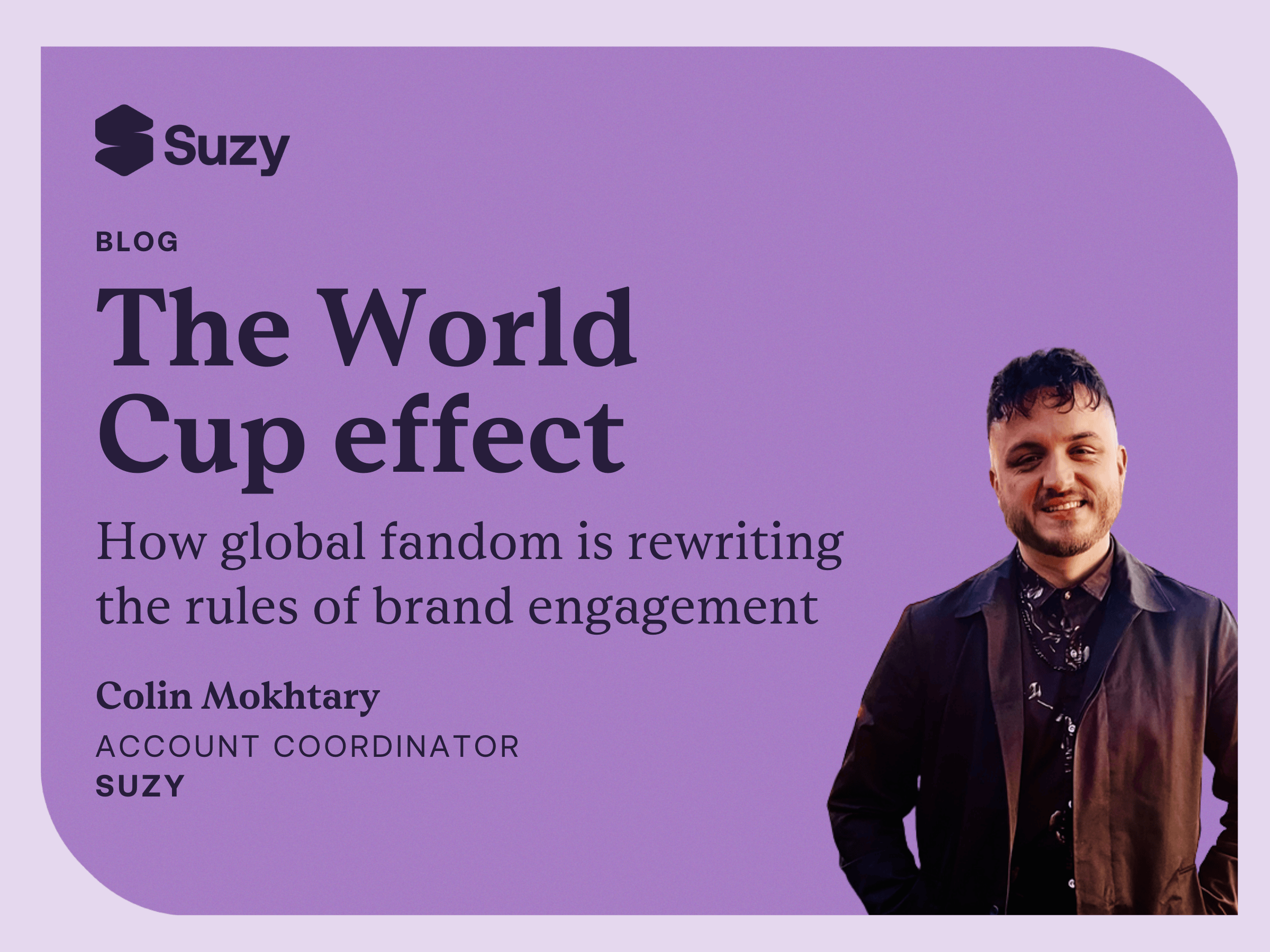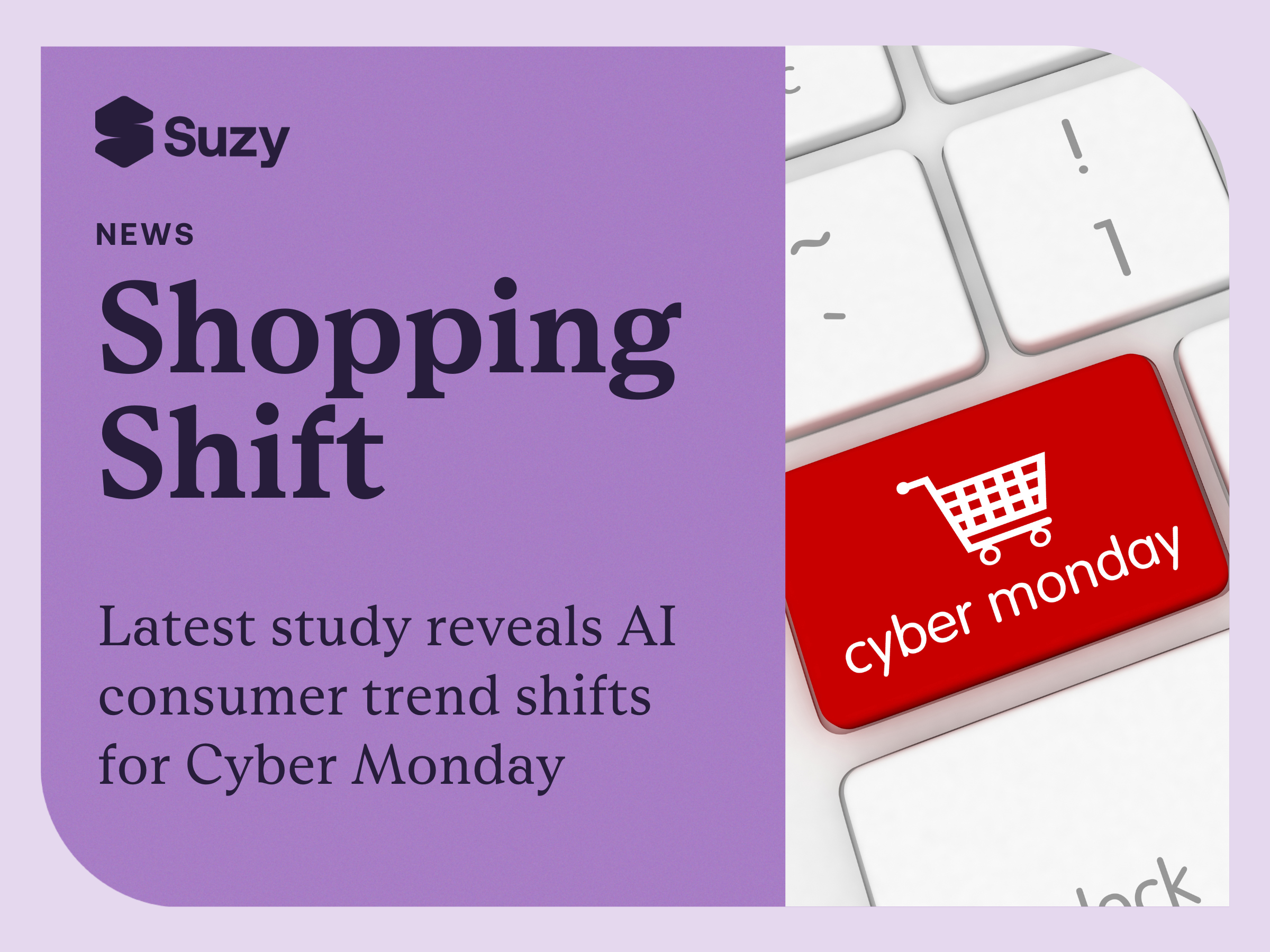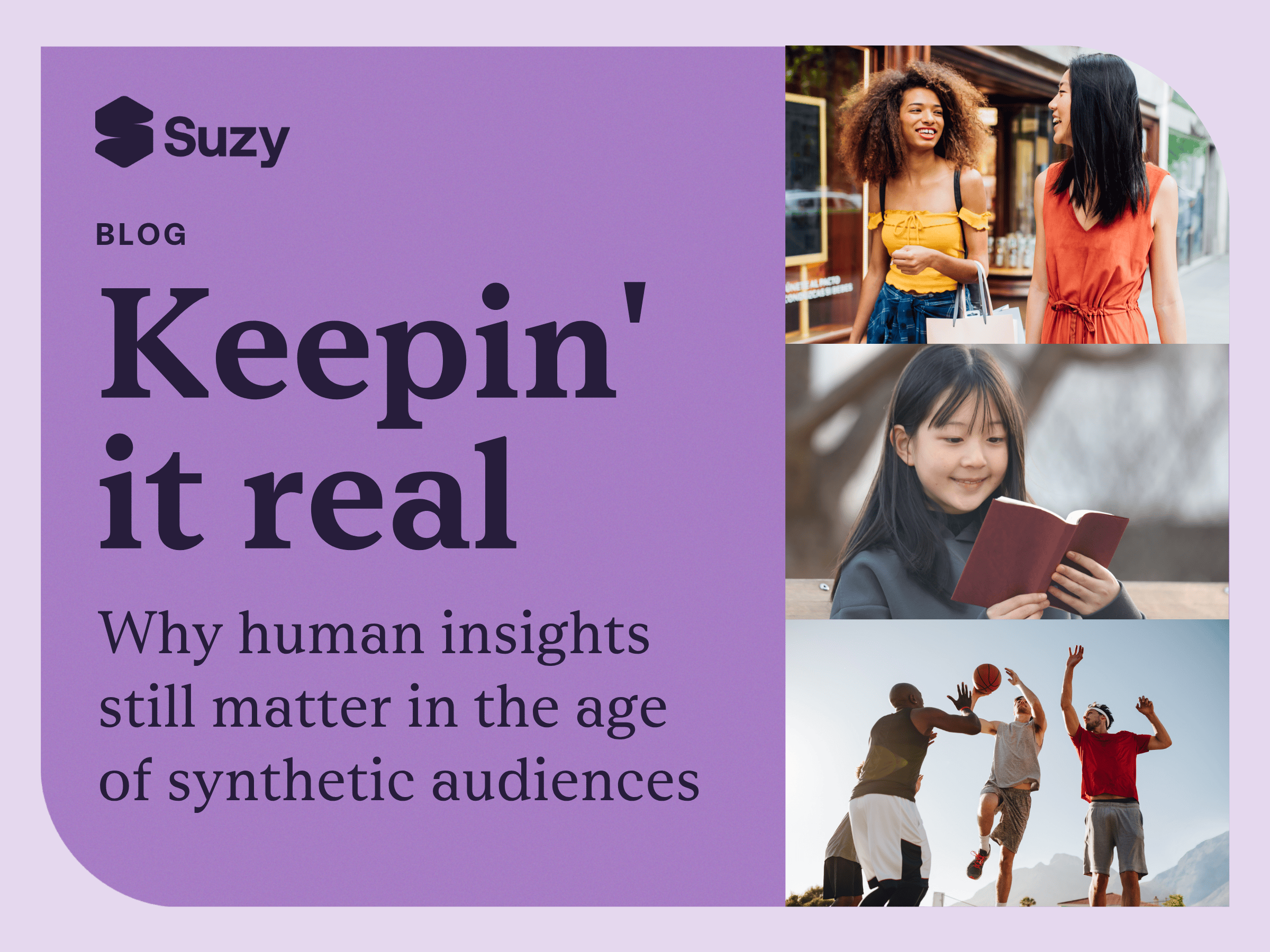This means that the old research cycles: Too slow. Too siloed. Too safe.
When consumer behavior can shift in a week, waiting six more for insights is a strategic liability. Static trackers and annual surveys leave brands flying blind just when they need clarity most. And while moving fast may feel risky, standing still is far more dangerous. Strategic paralysis doesn’t protect your brand, it just delays the inevitable.
Choosing the right research partner in this environment is crucial.
We’ve seen this before. Think back to 2020: the brands that iterated quickly were the ones that adapted, evolved, and, in many cases, outpaced the competition. Agile product pivots, rapid message testing, and social-first engagement weren’t luxuries; they were lifelines.
Today, the same is true, only the stakes are higher, and the change is constant.
Because in a world where consumers swipe, scroll, and shift overnight, brands can’t afford to wait for certainty. They need tools that keep pace with people, and deliver insights fast enough to matter.
|
Traditional Research
|
Iterative Research
|
|
Commissioned quarterly or annually
|
Always-on or deployed at key decision points
|
|
Static reports, delivered post-hoc
|
Live dashboards, rapid-turn testing
|
|
Academic in tone and scope
|
Practical, decision-ready outputs
|
|
Long cycles, limited agility
|
Fast loops with room to pivot and retest
|
|
Susceptible to bad actors and quality concerns
|
Built-in quality controls and monitoring, fit for the AI-age
|
Iterative research isn’t just faster, it’s built for action.
It’s the difference between knowing what happened last quarter and understanding what your customers are thinking right now. That shift, from episodic to embedded, is what gives modern brands their edge.
Back to table of contents.
Core Characteristics of Iterative Research
1. Continuous, Not Episodic
Consumer behavior doesn’t follow a calendar. Neither should your research. Iterative research runs alongside your campaigns, product cycles, and cultural shifts, not six weeks behind them.
📌 Example: E.l.f. Beauty launched 17 new products during the early stages of COVID, not by guessing, but by continuously testing creative and product ideas through channels like TikTok. Their agility helped drive $72M in sales in Q2 2020, at a time when competitors were pulling back. And more recently E.l.f. Beauty crossed the $1B in sales milestone, proving that continuous research is a recipe for success.
2. Action-Driven, Not Academic
Iterative research isn’t about 80-slide decks or academic theory. It’s about clarity, direction, and speed to action. Whether it’s optimizing copy before launch or validating packaging with real customers, iterative insights directly inform go-to-market strategies.
📌 Example: Zevia used Suzy’s end-to-end capabilities to reshape and optimize its portfolio, starting with quantitative to determine consumer preferences for existing and potential flavors, then following up with voice qual to deeply understand the drivers of preference. “The partnership with Suzy has transformed our approach to flavor development, enabling us to strategically target and satisfy our core consumers.” Laura-Lynn Freck, former VP Business Insights and Category Leadership, Zevia.
3. Decision-Ready Insights, Not Questionable Data
Fast insights only matter if you can trust them. Without quality, speed becomes waste. When your teams can rely on what the data says, they can act faster, and with impact.
📌 Example: A leading private equity firm was able to move forward with the purchase of a target company, the first in a portfolio, based on research completed within 24 hours.
📌 Example: A beauty brand was able to test, optimize, and launch new product naming, packaging, and labelling with confidence, based on reliable data and insights completed in 36 hours.
Back to table of contents.
Why It Matters Now
Consumers are moving faster than ever. Loyalty is thin. Budgets are tighter. And leadership expects insight that’s not just accurate, but immediate.
Iterative research helps you stay in sync with what people care about today, so you're not stuck guessing tomorrow. It reduces the risk of launching off-key campaigns, streamlines innovation, and builds confidence across teams.
With platforms like Suzy, brands can test, optimize, and launch with clarity in days.
Because the brands that learn the fastest? They win the fastest.
Back to table of contents.
How to Put Iterative Research Into Action
It’s one thing to believe in moving fast. It’s another to build an insight function that actually does it.
Iterative research doesn’t just happen because you want to be more agile. It requires the right tools, workflows, and organizational alignment to consistently turn signals into strategy, and strategy into action.
If your research still runs on quarterly cadences and static reports, you’re not just moving slowly. You’re missing the moment.
So, what does it take to truly Iterate Quickly?
1. Listen Continuously
Modern brands don’t wait for questions to arise, they’re listening before the brief is written. That means setting up:
- Always-on consumer pulses
Short, repeatable check-ins with target audiences to monitor sentiment, reactions to cultural moments, or shifting needs.
- Cultural signal scanning
Pull in macro trend data, from social chatter to behavioral analytics, to sense what’s gaining traction in the broader landscape.
- Rapid and reliable voices
Continuous listening is only impactful if you can reach the right audience, in the right timeframe, and be confident in the responses.
Listening continuously doesn’t mean reacting to every blip. It means staying in tune with your consumer, so you’re never flying blind.
2. Layer Your Methods
Traditional research often treats qual and quant as separate steps, or separate teams. But modern decision-making needs both at once.
- Quantitative methods like MaxDiff, TURF, and monadic testing deliver the what: the strongest claims, flavors, features, or formats.
- Qualitative methods, particularly unmoderated video or voice-based feedback, reveal the why behind those choices: emotional cues, value alignment, friction points.
- AI-powered methods like Suzy Speaks, are built for iterative research, bridging the gap between traditional quant and qual, allowing brands to quickly move from the what to the why at scale.
📌 Example: A CPG brand testing multiple sustainability claims doesn’t stop at top-performer rankings. They pair quant results with follow-up voice responses to understand why “reusable” resonates more than “biodegradable” in a specific segment.
Layering your methods creates insight that’s not only reliable, but rich. That’s how you move from surface metrics to strategic clarity.
3. Close the Loop
Even the best insights are wasted if they’re delivered too late, or don’t match decision-making rhythms.
To put iterative research into action, you need to close the loop between research and execution:
- Embed research into weekly cadences
Sync with agile product sprints, creative reviews, and campaign standups. Don’t treat insights as a separate process––make them part of the workstream.
- Create decision-ready outputs
That means fewer decks, more dashboards. Less hindsight, more foresight. Suzy’s live tools enable teams to test, learn, and apply insights within days, or even hours.
- Measure and revisit
Post-launch testing is just as critical as pre-launch. What worked? What didn’t? What needs to be optimized?
When research keeps pace with the business, it becomes a strategic accelerant, not a bottleneck.
| Questions to ask your research partner, to ensure they are built for iteration: |
|
• Can we test and validate ideas within 24–48 hours?
|
|
• Can we combine qual and quant in a single workflow?
|
|
• How are you able to incorporate AI-moderation and other innovative methods into our research plan?
|
|
• How do we know the research results are reliable? What quality measures do you have in place?
|
|
• Are we able to leverage expert support if we need assistance for specific research projects or objectives?
|
|
• Can stakeholders across teams easily access and act on insights?
|
If the answers are “no” or “it depends,” you may be stuck with a vendor rooted in an outdated research model.
Back to table of contents.
How Teams Can Use Iterative Research to Drive Clarity
For iterative research to drive real impact, it needs to be a strategic input across departments, embedded into how teams plan, prioritize, and pivot.
Here’s how each team can use iterative research to move with more clarity and confidence:
Insights & Analytics Teams
Building a scalable, real-time research infrastructure adds value by surfacing insights you can actually use, not just more data to sift through. It helps teams identify which emerging consumer signals are worth acting on, and which ideas resonate with audiences before committing to execution. Most importantly, it enables decision-ready feedback without weeks of lead time. The result? Insights teams become internal catalysts, driving product roadmaps, shaping creative briefs, and influencing executive strategy.
Marketing & Brand Teams
Research adds value across messaging, campaign testing, brand positioning, and cultural relevance, helping you figure out what sparks attention and drives conversion. It reveals whether your creative aligns with what your audience actually cares about today, and whether your brand is showing up in a timely, emotionally resonant way. With this kind of clarity, marketing teams stop guessing. They test early, pivot quickly, and launch with confidence, backed by insights that reflect real-time sentiment, not last quarter’s assumptions.
Product & Innovation Teams
Research brings value to UX feedback loops, concept testing, feature prioritization, and de-risking development cycles. It answers key questions like: Which features matter most to our users, and which ones confuse them? What unmet needs are hiding in plain sight? And how can we drive stronger adoption, satisfaction, and retention? With these insights, product teams gain visibility into real-world reactions before a single line of code is written. The result? Smarter prioritization, faster iteration, and stronger launches.
Executive & Strategy Leaders
Research fuels strategic foresight, scenario planning, and data-informed resource allocation, helping leaders see what’s coming, not just what’s already happened. It sheds light on how macro trends are reshaping the industry, whether your strategy aligns with where the market is headed, and which early signals are worth betting on. With this clarity, executives operate with speed and certainty, making bold moves grounded in a forward-looking view of consumer behavior.
Conclusion: Build for Speed, Act with Clarity
If there’s one takeaway from the last few years, it’s this: reacting isn’t enough. To lead in today’s market, brands need to anticipate, iterate, and evolve, faster than ever before. Iterative research makes that possible. It doesn’t just compress timelines; it connects teams, surfaces richer insights, and transforms data into decisive action.
Whether you're optimizing a campaign, refining your product roadmap, or sensing the next big shift in consumer sentiment, real-time feedback is no longer a nice-to-have, it’s a competitive edge. The brands that integrate always-on, layered, and looped-in research aren’t just more agile. They’re more aligned. More creative. And ultimately, more effective.
At Suzy, we’ve built a platform designed to help you move at the speed a modern brand needs, without sacrificing depth or rigor. From scalable AI-qual to traditional qual to trend-layered quant, our tools help you see what’s next before it’s obvious.
Want to see how iterative research looks in action?
👉 Ask Suzy. Let’s make your next move your smartest one yet.
Book a Demo today
See Suzy in action. Learn how Suzy can boost your business.
.webp)
.avif)






